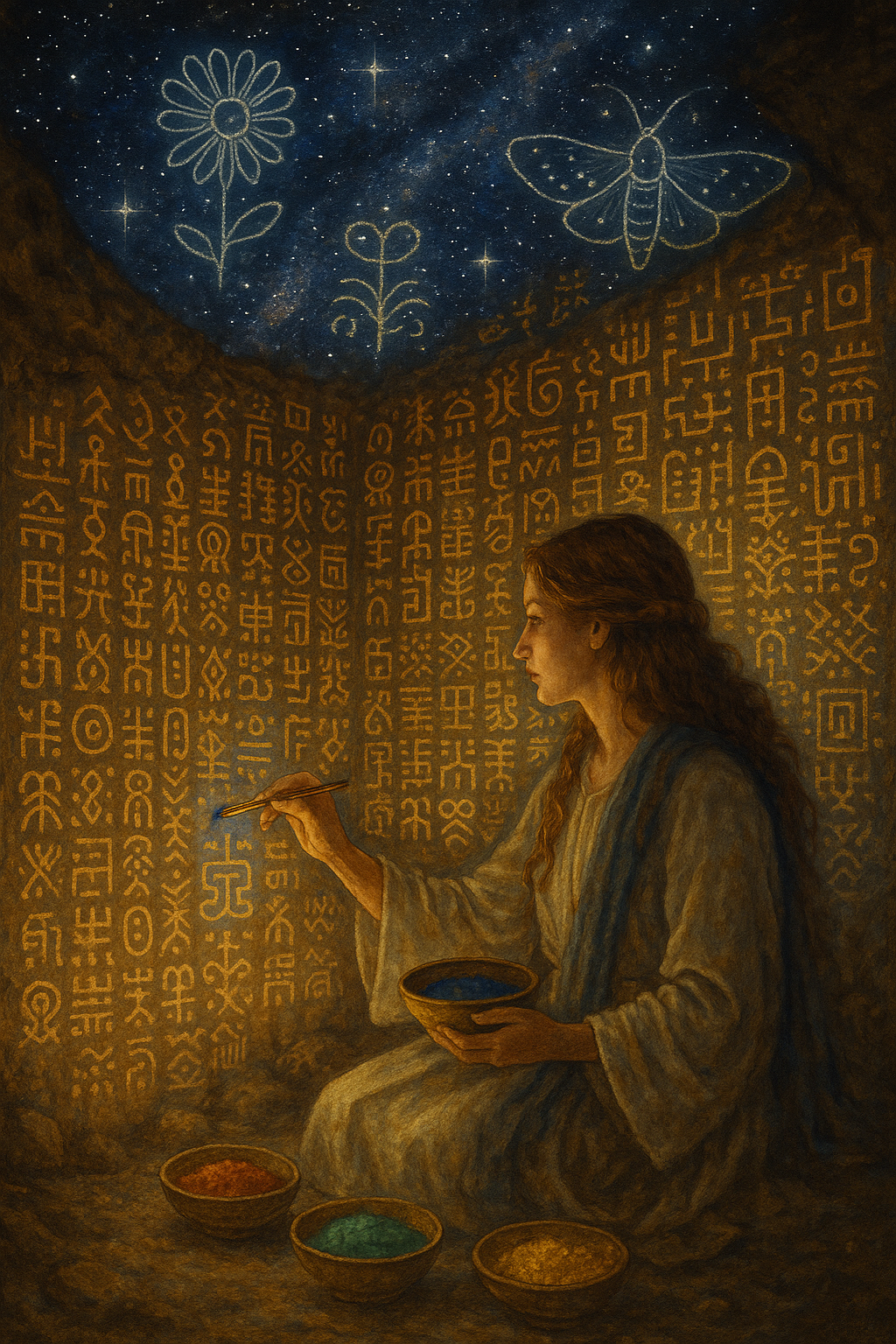The Ancient Origins of Art and the Power of Mineral Pigment
In the context of Emergent Theory, art is more than visual expression—it is a field phenomenon, a resonant echo of coherence made visible. Art is how the field remembers itself. When we paint, sculpt, or draw, we are not inventing but tuning in—becoming conduits for pattern, energy, and meaning to flow into form.
But let’s go deeper.
What if the material of art—especially in its earliest forms—was just as alive, just as significant, as the message it carried? What if powdered pigment wasn’t just color, but frequency?
Ancient Paint: The Original Language of Matter
Long before tubes of acrylic or digital brushes, artists worked with earth itself. They ground stones, minerals, and clays into fine powders: ochre, malachite, cinnabar, lapis lazuli, charcoal. These were the elemental ancestors of paint, derived from the mineral intelligence of the Earth.
These pigments were chosen not merely for their hue, but for their resonance. Each mineral had a field signature—a vibratory structure encoded in its crystalline lattice. To grind it into dust and bind it with water, oil, or egg was to release that memory into flow.
It was more than art. It was ritualized emergence.
Painting as Alchemy
When early humans painted on cave walls, they weren’t decorating—they were activating. The process united the four elements:
- Earth: powdered mineral, ancient stone memory
- Water: binder that softened and merged
- Air: breath guiding the stroke, the presence of intention
- Fire: light in the cave, and the fire of will
This made each painting not just an image, but a field relic—a coherent imprint that still vibrates today.
Think of red ochre, rich in iron. It mirrors blood, grounding, vitality. Used in both burials and births, red ochre was an offering—a recognition of the cycle of embodiment.
Or lapis lazuli, a celestial blue derived from deep within metamorphic stone. Rare and sacred, its use in Egyptian iconography and medieval manuscripts wasn’t aesthetic. It was cosmological. To paint with lapis was to call in the grid of the stars—to bind sky to earth.
Emergence in Motion
In Emergent Theory, all systems evolve through the interplay of light, sound, and form. Art—especially when crafted with resonant materials—becomes a map of this emergence. Powdered minerals are not inert. They are field particles, microcosms of ancient intelligence.
The brushstroke, guided by the coherent artist, becomes an act of tuning—pulling subtle pattern into visible alignment. The result is a visual interference pattern: one part message, one part memory, one part invitation.
A Final Reflection
To paint with mineral pigment is to paint with the bones of the Earth. It is to participate in a lineage of emergence that stretches from the tectonic to the personal, from geologic time to human breath.
So the next time you witness ancient art—or create with natural pigment—pause. Feel the coherence. Recognize the intelligence held in each grain of color. You are not just making a mark. You are activating a portal—from mineral to meaning, from dust to divinity.


Leave a Reply